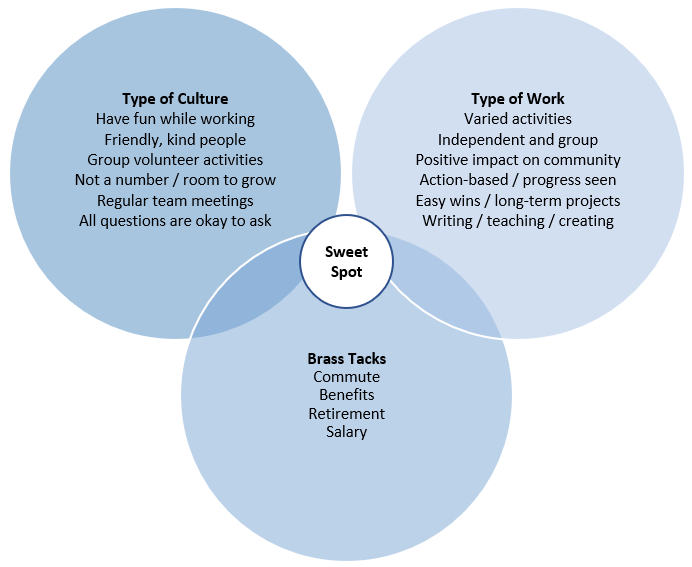Almost everywhere we look – LinkedIn, Twitter, and the news – we see mention of a trend called “The Great Resignation.” Large publications like the Harvard Business Review and MIT Sloan Management Review are evaluating why people are leaving their jobs. These articles reach similar conclusions: a supportive culture matters.
I recently changed my workplace. I left a job where the culture was magnificent, but the 2.5-hour commute became difficult for me. I determined I needed a change and I wasn’t willing to change jobs unless the culture was the right fit. In January, my focus on finding a work environment with a better fit paid off when I joined Highlands Consulting.
Instead of talking about the importance of culture (as the articles above already do), I’m pleased to share how I defined the kind of culture important to me and how I found it.
Step 1 – Clarify What I Want
It’s easy to name and claim a desired salary amount, a title, and a commute distance. It takes more effort, focus and critical thinking to identify the specific cultural/soft/emotional/under-the-surface elements supporting us. Vague statements like, “I want a happy place to work” won’t cut it when evaluating job opportunities.
We need specifics, details, and clarity. We need to know what does “happy place to work” exactly mean? We need a specific list of how we know a potential workplace is “happy.” To get there, I asked these questions: If I had a magic wand, what does my ideal workplace look and feel like? What are the people like? How do colleagues engage with me and I with them?
There are all kinds of guides to help with this first step. I particularly like Richard Bolles’s classic “What Color is Your Parachute?” and Danielle LaPortes’s “The Desire Map.” Both of these books are about defining personal desires/skills and coaching through the process with exercises.
Step 2 – Write it Down
To borrow from the movie “Field of Dreams,” if you write it, it will come. When I set my intention in writing I have a physical touchstone to use for measuring new opportunities. Getting the list out of my head helps me see and reference my needs in clear and simple bullet points.
What Color is Your Parachute recommends creating a Venn Diagram to see where desired areas intersect (aka the sweet spot.) This visual is a great way to remind myself that I’m only interested things that fall into the sweet spot. There are plenty of jobs which offer one or two of my desired components. For me to feel fulfilled and supported at work, I need all components. This Venn Diagram is a simple example of what it could look like. You may have more objects in your diagram.
Step 3 – Stick to My Guns
Whether surfing on the web or receiving a call from a recruiter, I referenced my lists to measure the opportunity. Does the opportunity check my most important boxes? Knowing when to say NO to an opportunity is important. The best thing we can do for ourselves in our lives is to figure out how to get paid for doing something we love at a place that is supportive to us. We work for 8-10-12 hours a day; we may as well love the work we do and where we work most of the time. Why settle for something less than what we really want to have?
Finally, We Evolve Over Time
The three steps (Clarify What I Want; Write it Down; Stick to My Guns) have been my tried-and-true process since college. This exact process has brought me unfathomable opportunities and success including working and living abroad, working and living in multiple places in the U.S., long lasting professional and personal relationships, and a life of fulfilling work in varied professions. Over the years, my desires have changed as I have evolved. Returning to these same steps continues to clarify what’s important to me right now; honor my expanding skills; and build stretch goals for my evolution in my work life.
I trust that sharing my own steps will support you in your journey.

